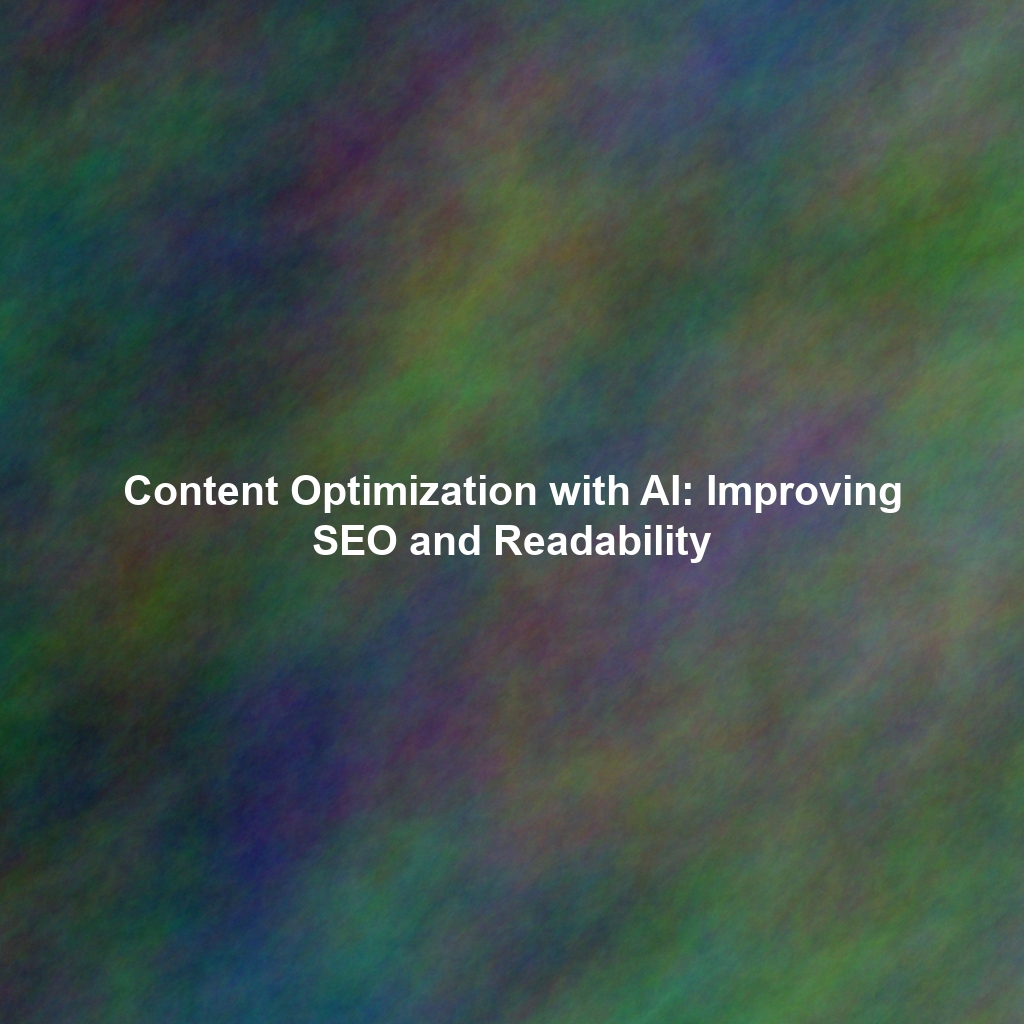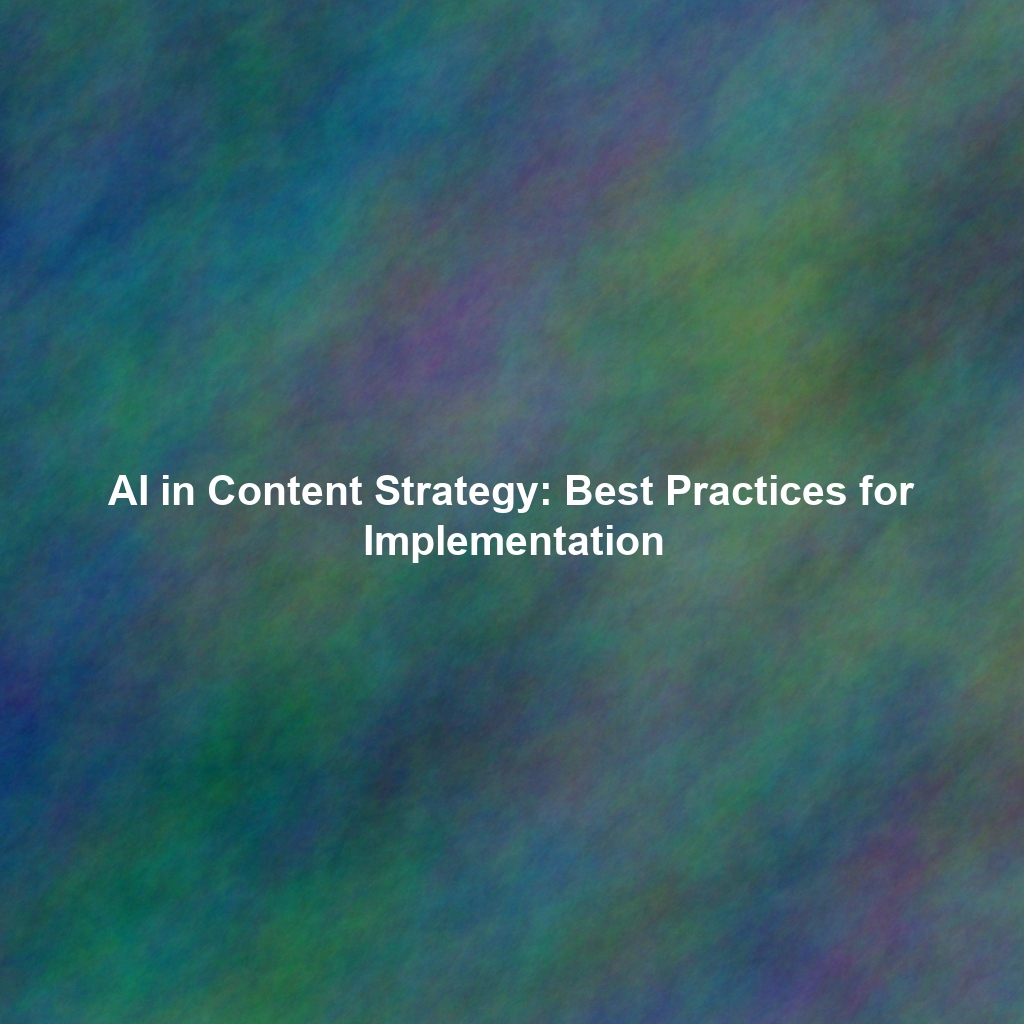Why Integrate HubSpot with Other Marketing Tools? The Strategic Mandate
The decision to integrate HubSpot with other specialized marketing tools is not a matter of preference; it’s a strategic mandate driven by the demands of the modern customer journey and the imperative for operational efficiency. Integrations fundamentally transform your marketing capabilities, allowing you to:
- Centralize & Unify Data: Eliminate debilitating data silos. Integrations create a single source of truth for customer data, pulling information from every touchpoint (website, CRM, ads, support, e-commerce) into HubSpot. This unified view is essential for truly understanding your customers and building comprehensive profiles.
- Automate Complex Workflows & Drive Operational Efficiency: Streamline repetitive, manual tasks across platforms. Automate lead scoring, data syncing, content delivery, and sales handoffs. This frees up your marketing and sales teams from tedious administrative work, allowing them to focus on strategic initiatives, creative development, and high-impact activities.
- Improve Data Accuracy & Reliability: Ensure consistency and reliability across your marketing data. Automated data synchronization minimizes human error, reduces discrepancies, and ensures that all teams are working with the most up-to-date and accurate customer information. This is critical for data-driven decision-making.
- Enhance Reporting & Unlock Deeper Insights: Gain a truly holistic view of your marketing performance. By integrating data from various sources, you can create comprehensive dashboards, attribute conversions more accurately, and identify trends and opportunities that would be invisible in fragmented systems. This leads to more informed, impactful strategic decisions.
- Enable Hyper-Personalization at Scale: Leverage rich, unified data from multiple sources to deliver more relevant, timely, and engaging customer experiences across every channel. Personalize content, offers, and communication based on a complete understanding of individual user behavior, preferences, and lifecycle stage.
- Boost Customer Lifetime Value (CLTV): By creating seamless, personalized journeys, you foster stronger customer relationships, reduce churn, and increase repeat purchases. This directly contributes to a higher CLTV, a critical metric for long-term business growth.
- Improve Sales & Marketing Alignment: Break down the traditional walls between marketing and sales. Integrations ensure a smooth, data-rich handoff of qualified leads, providing sales with the context they need to close deals more effectively, and marketing with feedback on lead quality.
The Cost of Data Silos: A Hidden Drain on ROI
Operating with disconnected systems leads to redundant data entry, inconsistent customer records, missed opportunities for personalization, and a fragmented view of your marketing funnel. This inefficiency directly translates into wasted budget, slower response times, and a diminished customer experience. Integrations are the antidote to this operational drag.
Key HubSpot Integration Categories for Marketing: Building Your Unified Stack
HubSpot’s extensive App Marketplace offers thousands of integrations. To maximize your ROI, focus on these critical categories that address core marketing functions and data flows:
1. CRM Integrations: Aligning Marketing and Sales for Revenue Growth
Integrating HubSpot with your primary CRM (Customer Relationship Management) system is absolutely crucial for aligning marketing and sales efforts, ensuring a seamless customer journey from lead to loyal advocate. These integrations enable you to seamlessly pass leads and customer data between the two teams, ensuring a smooth handoff and a unified, 360-degree view of the customer lifecycle. This directly impacts revenue acceleration.
- Salesforce: As the market leader in CRM, the HubSpot-Salesforce integration is robust and highly sought after. It allows for bidirectional data sync (contacts, companies, deals), lead scoring alignment, automated task creation for sales, and comprehensive reporting across both platforms.
Strategic Use Case: Automatically create a Salesforce task for a salesperson when a lead reaches a certain marketing qualified lead (MQL) score in HubSpot, complete with all relevant marketing activity history, ensuring sales has full context for outreach. - Microsoft Dynamics 365: Another leading enterprise CRM solution, particularly strong in larger organizations. The integration provides similar functionalities to the Salesforce integration, enabling synchronized contact, company, and deal data, as well as automated workflows.
Strategic Use Case: Track granular marketing campaign attribution within Dynamics 365 by syncing detailed HubSpot campaign data (e.g., email opens, content downloads, website visits) to specific lead records, allowing sales to see the full marketing touchpoint history. - Zoho CRM: A more affordable and user-friendly CRM option, popular with SMBs. The HubSpot integration allows for real-time contact and lead synchronization, email tracking, and marketing automation triggers.
Strategic Use Case: Trigger a HubSpot workflow to send a personalized follow-up email sequence when a lead is created or moves to a specific stage in Zoho CRM, ensuring immediate and relevant engagement without manual intervention.
2. Social Media Management Integrations: Amplifying Reach & Engagement
Social media is an essential component of modern marketing, driving brand awareness, engagement, and customer service. Integrating HubSpot with dedicated social media management tools allows you to centralize scheduling, monitor brand mentions, track engagement, and measure the ROI of your social media efforts more effectively.
- Buffer: A popular social media scheduling and management platform known for its ease of use. The HubSpot integration allows you to publish social media posts directly from HubSpot, track engagement metrics (likes, shares, comments), and segment contacts based on their social media interactions.
Strategic Use Case: Automatically add contacts to a HubSpot list based on their engagement (e.g., commented on a specific post, clicked a link) with your social media campaigns managed through Buffer, enabling targeted follow-up. - Hootsuite: A comprehensive social media management platform offering a wide range of features for monitoring, publishing, and analytics across multiple networks. The HubSpot integration enables you to track social media leads, monitor conversations for brand mentions, and integrate social data into your marketing automation workflows.
Strategic Use Case: Automatically create a HubSpot contact when someone interacts with your Hootsuite campaigns (e.g., fills out a lead gen form on a social ad), ensuring no lead falls through the cracks and can be immediately nurtured.
3. Analytics & Business Intelligence (BI) Integrations: Measuring What Matters, Driving Decisions
Data-driven marketing is essential for success. Integrating HubSpot with advanced analytics and Business Intelligence (BI) dashboards provides you with deeper, more granular insights into your marketing performance, allowing you to track key metrics, identify trends, and make truly informed strategic decisions. This moves you beyond basic reporting to actionable intelligence.
- Google Analytics (GA4): The widely used web analytics platform. The HubSpot-Google Analytics 4 integration allows you to track website traffic, user behavior across your site, and conversion events (e.g., form submissions, purchases).
Strategic Use Case: Analyze the effectiveness of your HubSpot marketing campaigns (e.g., email sequences, landing pages) in driving specific traffic segments and conversions on your website within GA4, providing a unified view of user journeys. - Databox: A business analytics platform designed for creating custom, real-time dashboards by integrating with various data sources. The HubSpot integration allows you to pull in HubSpot marketing, sales, and service data to create custom dashboards that track key marketing metrics and visualize your data in an easily digestible format.
Strategic Use Case: Build a Databox dashboard to track HubSpot Marketing Qualified Leads (MQLs), Sales Qualified Leads (SQLs), conversion rates across different channels, and even revenue attribution, providing a single source of truth for your leadership team. - Looker Studio (formerly Google Data Studio): A free, powerful data visualization tool that connects to HubSpot data.
Strategic Use Case: Create custom, shareable performance reports for different stakeholders, combining HubSpot data with other marketing data sources (e.g., ad spend from Google Ads) to show holistic campaign ROI.
4. Advertising Platform Integrations: Optimizing Ad Spend & Targeting Precision
Paid advertising is a key component of many marketing strategies, driving immediate reach and conversions. Integrating HubSpot with major advertising platforms allows you to track ad performance, optimize campaigns based on CRM data, and target the right audience with unparalleled precision, maximizing your ROAS.
- Google Ads: The leading online advertising platform. The HubSpot-Google Ads integration allows you to track ad conversions (including offline conversions from HubSpot CRM), import HubSpot contact lists to create targeted audiences (e.g., retargeting website visitors who are also MQLs), and optimize bids based on CRM data.
Strategic Use Case: Create a retargeting audience in Google Ads based on HubSpot contact list membership (e.g., “Customers who haven’t purchased in 90 days”) to deliver highly specific win-back ads. - Facebook Ads (Meta Ads): A powerful advertising platform for reaching a wide, diverse audience across Facebook and Instagram. The HubSpot integration allows you to track Facebook ad conversions, sync leads generated from Facebook Lead Ads directly into HubSpot, and create lookalike audiences based on your HubSpot customer data.
Strategic Use Case: Sync leads generated from Facebook Lead Ads directly into HubSpot, triggering an automated email nurture sequence within minutes of form submission, significantly improving lead response time. - LinkedIn Ads: Ideal for B2B marketing, offering precise professional targeting. The HubSpot integration allows you to track LinkedIn ad conversions, sync leads generated from LinkedIn Lead Gen Forms directly into HubSpot, and create targeted audiences based on company size, industry, and job title from your CRM.
Strategic Use Case: Nurture leads generated from LinkedIn Lead Gen Forms with automated HubSpot email workflows, ensuring a personalized follow-up based on their professional context.
5. Other Essential Marketing Technology Integrations: Expanding Capabilities
Beyond the core categories mentioned above, a myriad of other integrations can significantly enhance your HubSpot experience, filling specific functional gaps and streamlining niche workflows:
- E-commerce Platforms (e.g., Shopify, WooCommerce, Magento): Crucial for e-commerce businesses. These integrations allow you to track customer purchases, abandoned carts, product views, and order history directly within HubSpot. This enables hyper-personalized marketing automation based on buying behavior (e.g., post-purchase nurture sequences, abandoned cart recovery, product recommendations).
- Video Hosting Platforms (e.g., Wistia, Vidyard, Vimeo): Integrate to track video views, engagement rates, and viewer demographics directly within HubSpot. This allows you to segment contacts based on video consumption and trigger personalized follow-ups (e.g., send a sales email when a prospect watches 80% of a product demo video).
- Webinar & Event Platforms (e.g., Zoom, GoToWebinar, Eventbrite): Sync webinar attendance, registration data, and engagement metrics (e.g., poll responses) with HubSpot. This allows for automated pre- and post-webinar nurture sequences, lead scoring based on attendance, and segmenting attendees for future events.
- Customer Service & Support Platforms (e.g., Zendesk, Intercom): Integrate to gain a unified view of customer interactions. Sync support tickets, chat transcripts, and customer satisfaction scores into HubSpot, providing sales and marketing teams with critical context about customer health and pain points. This enhances the overall customer experience and informs proactive engagement.
- Content Management Systems (CMS) (e.g., WordPress): While HubSpot has its own CMS, integrations with external CMS platforms allow you to leverage HubSpot’s analytics and lead capture forms on your preferred website builder.
- Customer Data Platforms (CDPs) (e.g., Segment, Tealium): For highly complex data environments, a CDP can act as a central data hub, collecting, unifying, and normalizing customer data from all sources before feeding it into HubSpot. This ensures HubSpot receives clean, comprehensive data for advanced segmentation and personalization.
Choosing the Right Integrations for Your Business: A Strategic Decision Framework
With thousands of integrations available, selecting the right ones is a critical strategic decision that directly impacts your marketing ROI. Avoid a scattergun approach. Consider the following factors meticulously:
- Your Core Marketing & Business Objectives: What are your primary business goals? Are you focused on lead generation, customer retention, brand awareness, or sales acceleration? Choose integrations that directly support these top-level objectives.
- Your Current Technology Stack & Ecosystem: What tools are you already heavily invested in and reliant upon? Prioritize integrations that seamlessly connect these existing mission-critical systems with HubSpot, minimizing disruption and maximizing data flow.
- Your Budget & Resource Availability: How much are you willing to spend on integration licenses and, crucially, on the time and expertise required for implementation, maintenance, and ongoing optimization? Some integrations are plug-and-play; others require significant technical resources.
- Your Technical Expertise & Internal Resources: Do you have the in-house technical expertise (developers, data engineers) to implement and maintain complex integrations, or will you rely on external partners or simpler, native integrations? Assess your team’s capabilities realistically.
- Data Flow & Data Hygiene Requirements: Map out the exact data points you need to flow between systems and in which direction. Ensure the integration supports your data hygiene standards and doesn’t introduce data quality issues.
- Scalability & Future-Proofing: Choose integrations that can scale with your business growth and adapt to future technological advancements. Avoid solutions that might become bottlenecks later.
- Security & Compliance: Verify that any third-party integration adheres to your company’s security protocols and relevant data privacy regulations (e.g., GDPR, CCPA).
Before committing to a full implementation, carefully review the integration’s documentation, conduct thorough due diligence, and consider starting with a free trial or a small-scale pilot program. This allows you to test functionality, assess impact, and ensure it genuinely meets your needs before a full rollout.
Common Pitfalls to Avoid: Ensuring Integration Success
While HubSpot integrations offer immense benefits, mistakes in planning or execution can significantly hurt performance and even create new problems. Avoid these common pitfalls:
- Ignoring Data Mapping & Hygiene: Failing to meticulously plan how data will map between systems can lead to inconsistent records, duplicate entries, and corrupted data. Clean data is paramount for effective automation and personalization.
- Lack of Clear Objectives: Implementing integrations without a specific, measurable goal is a waste of resources. Every integration should serve a defined business purpose.
- Over-Integration (Too Many Tools): Don’t integrate for the sake of it. A bloated tech stack can lead to complexity, maintenance headaches, and diminishing returns. Only integrate tools that provide clear, incremental value.
- Neglecting Ongoing Maintenance & Monitoring: Integrations are not “set it and forget it.” They require regular monitoring, updates, and troubleshooting to ensure continuous, accurate data flow.
- Poor User Adoption: Even the best integration will fail if your marketing and sales teams don’t understand how to use it or see its value. Provide thorough training and demonstrate the benefits.
- Security & Compliance Oversights: Failing to assess the security protocols and data privacy compliance of third-party integrations can expose your data to risks and lead to regulatory penalties.
- Lack of Testing: Always test integrations thoroughly in a sandbox environment before deploying to production. Verify data flow, workflow triggers, and field mapping.
- Underestimating Complexity: Some integrations, especially custom ones or those involving complex data transformations, can be more technically challenging than anticipated. Plan resources accordingly.
Conclusion: Building a Unified, High-Performance Marketing Ecosystem with HubSpot
HubSpot integrations are a powerful, strategic imperative for extending the platform’s capabilities and streamlining your entire marketing and sales ecosystem. By intelligently connecting HubSpot with your other essential marketing tools, you can centralize critical data, automate complex tasks, unlock deeper, more actionable insights into your marketing performance, and ultimately, drive superior business results. This isn’t just about efficiency; it’s about competitive advantage.
Take the time to meticulously explore the available integrations, choose the ones that precisely align with your specific business needs and goals, and implement them with a clear, data-driven strategy. With the right integrations in place, HubSpot can truly become the central hub of your high-performance marketing operations, empowering you to create more effective, hyper-personalized customer experiences that lead to increased engagement, higher conversions, and significant, measurable ROI. This is the future of intelligent marketing.
 Skip to content
Skip to content

